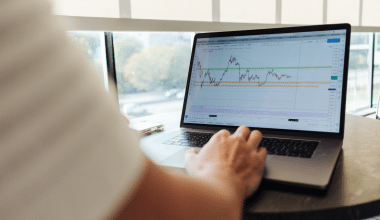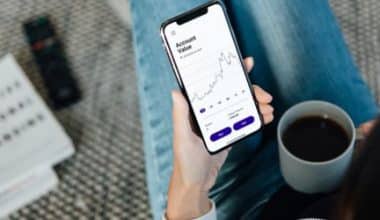There are various well-liked trading methods that you will come across when trading in the financial markets. It’s also possible that you won’t achieve the same results utilizing one technique as someone else. Which trading approach is right for you, in the end, is entirely up to you. You should think about your personality type, way of life, and accessible resources, among other things. In this article, we will deal more with the best crypto, forex, and futures day trading strategies.
Lets us roll on!!!
Day Trading Strategies
The phrase “day trading” describes the continuous buying and selling of equities. Day traders anticipate that the stocks they purchase will increase in value or decrease in value during the little period of time they hold those equities, which is typically just a few minutes or even seconds. Anyone interested in entering the high-risk, high-stakes world of day trading can read the following advice. You’ll discover five-day trading techniques that, with a lot of effort and a little bit of luck, might be successful. You’ll also discover five critical risk management tactics to help keep you in the game.
Best Day Trading Strategies
Below are some of the best day trading strategies to opt for:
#1. Momentum Day Trading
Using a momentum approach, an investor gets on a stock whose price is trending higher. Momentum stocks are hard to come by and uncommon.
#2. Scalping Strategy
The idea behind a scalping approach is that little victories throughout the day might amount to a substantial sum of money. The scalper establishes buy and sell targets and adheres to them. The scalping tactic moves quickly. It’s not unusual for many trades to be completed in a short period of time.
#3. Pullback Trading Strategy
To start using the pullback technique, find a stock or ETF that has a well-established trend. After that, keep an eye on the trend until prices diverge from it. The downward price movement, or pullback, is an entry moment for the day trader to buy if the established trend is upward.
#4. Breakout Trading
When the stock price rises over the previous top resistance price, a breakout trade occurs. According to Fidelity, breakthrough transactions with larger volumes have a higher chance of remaining profitable at the new, higher price. It is more challenging to profit from lower-volume breakouts since they are more likely to collapse below previous resistance levels.
#5. News Trading
Day traders might profit from trending daily stories by monitoring the business news. By “borrowing” shares of the stock from the investing company and selling them later, you can short a stock during the trading day if terrible news has been released. You can benefit from the difference less a commission if the stock price drops as anticipated and you repurchase the shares at the lower price. If the news is positive, you could “go long,” which is to buy the stock outright, and then sell the shares when the price increases.
Forex Day Trading Strategies
In forex day trading, positions are closed out at the end of each day’s trading and the next trading day is used to open new positions. Currencies day traders purchase and sell many currency pairings simultaneously, or even multiple times during the day, in order to profit from minute changes in the market. Day trading is more of a trading style than it is a technique because it just forbids leaving a position open overnight. While day trading, whether on forex or another market, common strategies include:
#1. Trading Trends
By analyzing the movement of asset prices and purchasing or selling in response to the trend’s direction, trend traders try to profit. Investors would take a long position and purchase the asset if there is an upward trend and prices are consistently setting higher highs. If prices are making a series of lower lows and the trend is downward, traders would sell to take a short position.
#2. Swing Forex Day Trading Strategies
Although prices never move in just one direction throughout a trend, swing trading is all about exploiting short-term price patterns. Swing traders, on the other hand, aim to gain from both up and down moves that take place over a shorter time frame. Swing traders are more interested in small reversals in a market’s price movement than trend traders are in long-term market patterns. They try to anticipate these reversals and trade to profit from minute changes in the market.
#3. Scalping Forex Day Trading Strategies
Scalping is a short-term trading method that targets a high win rate while taking tiny but frequent profits. According to the notion, it’s just as simple to grow your trading account by repeatedly taking smaller profits than it is to make fewer trades and try to lock in winnings over the long term. Scalping calls for a highly rigorous exit plan because losses might quickly offset gains.
#4. Mean-Reversion Forex Day Trading Strategies
The idea behind mean reversion is that prices, as well as other measures of value like price-to-earnings (P/E) ratios, will always eventually return to the historical mean. The tactic identifies assets whose recent performance has deviated significantly from their historical average by using technical analysis, such as moving averages. Traders of mean reversion will then profit from the trajectory’s return to normal.
#5. Money Flows Forex Day Trading Strategies
The money flow indicator uses volume and price, rather than just the asset’s price, to indicate if an asset may be oversold or overbought. To assess whether the money flow was positive or negative, it compares the number of deals from the previous day to the current day.
Crypto Day Trading Strategies
The particular liquidity and volatility of the cryptocurrency markets make it viable for crypto day trading, a short-term trading technique that involves buying and selling inside the same trading day. Many day traders are now learning how to capitalize on minute changes in the market and benefit from the volatility of coin prices. Day traders create a winning strategy based on planning and study. You can use a variety of day trading crypto strategies, depending on your skills and the market’s characteristics.
#1. Scamming Crypto Day Trading Strategies
Day traders employ scalping techniques to accumulate a large number of smaller wins rather than huge ones. Scalping is the trading method with the quickest turn-around because scalpers employ a lot of liquidity to profit from modest price fluctuations over a short period of time.
#2. Range Trading Scamming Crypto Day Trading Strategies
Range trading makes the most of non-trending markets by spotting steady high and low prices, which are shown as resistance and support levels on candlestick charts. “Support” is a price below the current price, and “Resistance” is a price above it. When the price fluctuates between the resistance and support levels, traders might buy at the support level and then resell at the resistance level. With this approach, day traders can benefit by purchasing a bitcoin asset when it is oversold and selling it when it is overbought. Volume is crucial to range trading since it may be used to validate patterns and determine whether it is appropriate to apply a range trading technique.
#3. High-Frequency Trading (HFT)
Quantitative traders that use algorithms and utilize trading bots to quickly enter and leave a cryptocurrency asset over a brief period of time use HFT, a sort of algorithmic day trading method. High-frequency traders employ computers that have been designed to run complex algorithms to profit from price movements that happen in a matter of seconds or even milliseconds.
#4. Technical Analysis Day Trading Strategies
Technical analysis is a tactic that uses market data to forecast the future price movement of a securities currency. Also, technical analysts can use their statistical trading method in any finance sector with historical trading data, evaluating prospective revenue or losses in crypto-based on historical behavior. Crypto-day traders may identify short-term trading patterns and strategies using technical analysis, which gives them the ability to uncover opportunities to trade and make money.
#5. News and Sentiment Analysis
This method is comparable to technical analysis in that it involves making predictions, but it differs significantly in that it relies on behavior patterns in people rather than price trends. With this method, day traders attempt to forecast whether demand for specific cryptocurrencies will increase or decrease by examining a variety of information sources to comprehend the majority consensus on the currency and forecast people’s behavior.
#6. Arbitrage Crypto Day Trading Strategies
One of the finest crypto day trading strategies for cryptocurrencies is arbitrage, which entails purchasing a coin on one exchange and earning money through the sale of it on another at a higher cost. You need accounts on exchanges that display a significant price differential in order to use this method. Arbitrage is a complex financial strategy, but if it is mechanized by crypto tax software, it can maintain price stability for digital assets between exchanges.
#7. IFC Markets
IFC Markets is a well-known vendor of forex and cryptocurrency CFDs that supports a variety of trading strategies. With the use of derivatives called crypto CFDs, day traders can speculate on cryptocurrencies without actually owning the underlying coins. As a result, they can bet big or small on the value of a given cryptocurrency. The cryptocurrency pairs are exchanged against conventional currencies.
Read Also: FLOOR TRADERS: Everything You Should Know
Futures Day Trading Strategies
Success in the realm of futures trading can bring significant rewards, but mistakes can be quite expensive. Because of this, it’s crucial to have a plan in place before you begin trading. These are seven strategies to assist you to become more knowledgeable about futures trading.
#1. Develop a Trading Strategy
The following first advice cannot be underlined enough: Before you take a position, thoroughly plan your trades. This entails putting an exit strategy in place in the event that the deal does not turn out as you expected. Reduce the likelihood that you’ll have to make significant choices when already in the market and putting money at risk. You don’t want your decisions to be dictated by your feelings of fear or greed, which could tempt you to cling to a losing position for too long or abandon a winning one too soon.
#2. Keep Your Positions Safe.
Making an early commitment to an exit strategy can shield you from substantial adverse actions. An excessive number of traders attempt to utilize “mental stops,” choosing a price in their minds for when they will close out a position and reduce their losses. Even for the most diligent traders, though, these are far too simple to overlook. Think about using stop-loss orders when trading to strengthen your commitment. The concept is to first select a bailout price, and then place a stop at that level. You can put a primary order and a protective stop at the same time with one-triggers-other (OTO) commands. This relieves you of the need to continuously monitor the market and the stress associated with placing your stop order at the appropriate time.
#3. Restrict Your Attention, but not Excessively.
Avoid overextending yourself by attempting to track and trade numerous markets. The majority of traders struggle to stay on top of a few markets. Keep in mind that trading futures involve significant time and energy commitment strategies. Even the most experienced trader may find it challenging to keep up with news, read market commentary, and analyze charts. You run the risk of not giving any market the time and attention it needs if you try to monitor and trade too many different markets. Trading only one market could not be a great strategy, on the other hand. There can be advantages to diversifying your futures trading, just as there are advantages to doing so in the stock market.
#4. Trading Slowly
Don’t floor the accelerator if you’re just starting off with futures trading as this is one of the strategies. When you’re just starting out, there’s no necessity to start trading five or ten contracts at once. Avoid the rookie mistake of utilizing your whole account balance to buy or sell as many futures contracts as you possibly can. Although occasional drawdowns are unavoidable, you should avoid building a sizable position where one or two bad transactions might leave you bankrupt.
#5. Think Long—and Short
Markets that are growing or sinking both offer trading chances. It is in our inclination to hunt for opportunities to invest in or “go long” a market. It is in our inclination to hunt for opportunities to invest in or “go long” a market. But, you can excessively restrict your trading opportunities if you’re not also willing to “go short” a market. You can purchase or sell the market using futures. To close out your position, you can buy a contract first and then sell it. Alternatively, you can first sell and then buy a contract to neutralize your position.
#6. Understanding Margin Calls
If you receive a margin call, you probably did so as a result of holding onto a bad trade for too long. Hence, take a margin deficiency as a sign that you’ve grown emotionally tied to a trade that isn’t performing as expected. You might be better off entirely abandoning the losing position than moving more money to cover the call or closing out open positions to lower your margin requirement.
#6. Be Patient
Don’t get so caught up in a market movement that you lose sight of the wider trading picture. Of course, you need to keep an eye on your available positions working orders, and account balances. But don’t rely on every market spike or downtick. You may not only drive yourself crazy, but you may also experience little zigzags or whipsaws that at first seem frightening and important but ultimately turn out to be mere intraday blips.
What Strategy Is Best for Day Trading?
Scalping is one of the greatest day trading techniques for experienced traders who can make snap judgments and act without hesitation.
What Is the 5 3 1 Trading Strategy?
According to the 5-3-1 trading technique, you should concentrate on just five main currency pairings. The pairs you select should be centered on one or two of the major currencies with which you are most familiar.
How Much Does the Average Day Trader Make a Day?
The average annual wage for day traders in the United States is $116,895, or $56 per hour.
What Type of Day Trading Is Most Profitable?
If you invest in the appropriate companies, intraday trading is a terrific way to get quick returns. Before the market closes, this sort of trading forces you to buy and sell your stocks on the same day. You must monitor your market position throughout the day in order to find a favorable time to sell your stocks.
How Many Hours Do Day Traders Work?
The majority of independent day traders work two to five hours every day. Before making genuine trading, they frequently practice making simulation transactions for several months.
Can I Make a Living Day Trading?
Indeed, it is the answer. In India, 500,000 people make their living through day trading.
Related Articles
- DAY TRADING CRYPTOCURRENCY: The Best Strategies, Pros & Cons
- Call Option vs Put Option: Stock Options
- Stock Trading Business: How to Start a Stock Trading Business
- HOW TO DAY TRADE: Complete Guide to Day Trading for Beginners
- HOW TO BECOME A DAY TRADER: Step-by-Step Guide






